Top Historical Places in Rome
-
 Appian Way is one of the oldest constructed roads that exist even today. This cobblestone road dates back to the 4th century and was primarily used for military supplies. Throughout history, this road has witnessed some of the major events like the crucifixion of Spartacus' army and the battle of Anzio in the Second World War. The Aurelian Walls are even older than the Appian Way as most of the...Read more
Appian Way is one of the oldest constructed roads that exist even today. This cobblestone road dates back to the 4th century and was primarily used for military supplies. Throughout history, this road has witnessed some of the major events like the crucifixion of Spartacus' army and the battle of Anzio in the Second World War. The Aurelian Walls are even older than the Appian Way as most of the...Read more -
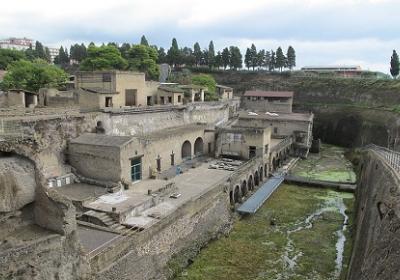 Parco Archeologico di Ercolano is one of the UNESCO World Heritage Sites in Italy. Located in Ercolano, this is known to be the sister-site to Pompeii. When Mount Vesuvius erupted in 79 A.D., it destroyed and buried the entire town of Herculaneum. Even though Pompeii and Herculaneum were destroyed in the same eruptions, the ways in which each city suffered are different. It is believed that mor...Read more
Parco Archeologico di Ercolano is one of the UNESCO World Heritage Sites in Italy. Located in Ercolano, this is known to be the sister-site to Pompeii. When Mount Vesuvius erupted in 79 A.D., it destroyed and buried the entire town of Herculaneum. Even though Pompeii and Herculaneum were destroyed in the same eruptions, the ways in which each city suffered are different. It is believed that mor...Read more -
Santa Sabina
(313 Votes)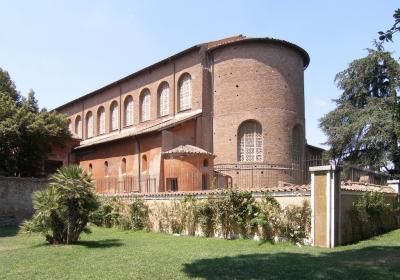 The Santa Sabina is the oldest basilica in Rome. It is an ancient historical church that is located on the Aventine Hill in Rome. The basilica looks like a beautiful reflection of the Sant’ Apollinaire Nuovo. The church is a very peaceful place to spend some time in. The interiors are intricate and eye catching. From the park aside Santa Sabina, you have panoramic views of Rome. A morning...Read more
The Santa Sabina is the oldest basilica in Rome. It is an ancient historical church that is located on the Aventine Hill in Rome. The basilica looks like a beautiful reflection of the Sant’ Apollinaire Nuovo. The church is a very peaceful place to spend some time in. The interiors are intricate and eye catching. From the park aside Santa Sabina, you have panoramic views of Rome. A morning...Read more -
House Of Vestals
(245 Votes)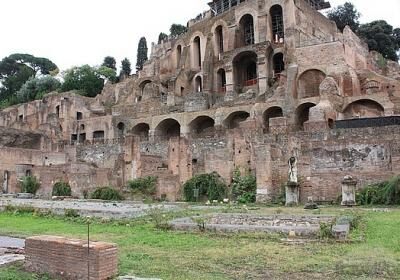 House of Vestal Virgins is a part of the Roman Forum and probably as close to Rome’s earliest history as you will ever come. The beautiful residential area of Vestal Virgins was a 50 room structure with a 3 storey construction and was built around the atrium and the double public pool. The House of Vestal Virgins is believed to date back to the 8th century B.C and during Theodosius’...Read more
House of Vestal Virgins is a part of the Roman Forum and probably as close to Rome’s earliest history as you will ever come. The beautiful residential area of Vestal Virgins was a 50 room structure with a 3 storey construction and was built around the atrium and the double public pool. The House of Vestal Virgins is believed to date back to the 8th century B.C and during Theodosius’...Read more -
Fontana Delle Tartarughe
(1191 Votes)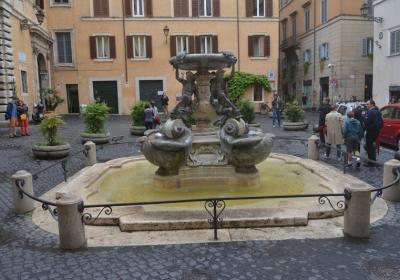 Designed by Giacomo della Porta who also designed the two fountains on either side of Piazza Navona, the Turtle fountain is one of the most iconic fountains in Rome. The statue consists of four Ephebes taking the support of dolphins and helping turtles reach the water basin placed above their heads. The basin is made from marble but the figures are made from bronze. The fountain adds a beautifu...Read more
Designed by Giacomo della Porta who also designed the two fountains on either side of Piazza Navona, the Turtle fountain is one of the most iconic fountains in Rome. The statue consists of four Ephebes taking the support of dolphins and helping turtles reach the water basin placed above their heads. The basin is made from marble but the figures are made from bronze. The fountain adds a beautifu...Read more -
Villa D'Este
(657 Votes)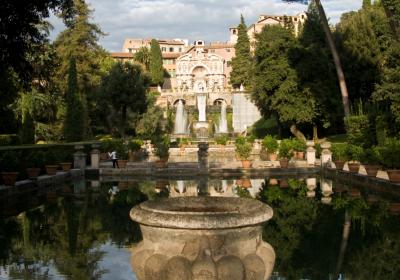 A masterpiece of Italian garden, this is a UNESCO world heritage site featuring attractive fountains, nymphs, grottoes, plays of water and music that are inspired by European mannerist and Baroque styles. The villa is a product of artists like Livio Agresti, Federico Zuccari, Durante Alberti, Girolamo Muziano, Cesare Nebbia and Antonio Tempesta who form the top array of late Roman mannerism and...Read more
A masterpiece of Italian garden, this is a UNESCO world heritage site featuring attractive fountains, nymphs, grottoes, plays of water and music that are inspired by European mannerist and Baroque styles. The villa is a product of artists like Livio Agresti, Federico Zuccari, Durante Alberti, Girolamo Muziano, Cesare Nebbia and Antonio Tempesta who form the top array of late Roman mannerism and...Read more -
Fosse Ardeatine
(64 Votes)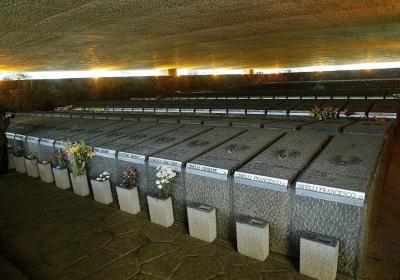 Ardeatine caves have a lot of history to it making the historic attraction an interesting site for many. Many civilians were arrested and slaughtered in the caves during the Second World War. The caves may seem pretty depressing at first, but owing to its historic depth it makes for an impressive site. Many tourists visit here to take a peek into modern history. It is said that the Nazis who ki...Read more
Ardeatine caves have a lot of history to it making the historic attraction an interesting site for many. Many civilians were arrested and slaughtered in the caves during the Second World War. The caves may seem pretty depressing at first, but owing to its historic depth it makes for an impressive site. Many tourists visit here to take a peek into modern history. It is said that the Nazis who ki...Read more -
Altare Della Patria
(5369 Votes)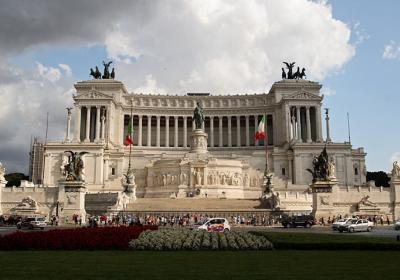 One of the most prominent structures of Rome and also one of the controversial structures of Rome, this white building represents remarkable architecture. Said to resemble a typewriter and sometimes a massive wedding cake, the Altare Della Patria was a matter of immense pride at the turn of the 20th century. Constructed to honour Victor Emanuel II - the first king of united Italy, the monument ...Read more
One of the most prominent structures of Rome and also one of the controversial structures of Rome, this white building represents remarkable architecture. Said to resemble a typewriter and sometimes a massive wedding cake, the Altare Della Patria was a matter of immense pride at the turn of the 20th century. Constructed to honour Victor Emanuel II - the first king of united Italy, the monument ...Read more -
Galleria Colonna
(2919 Votes)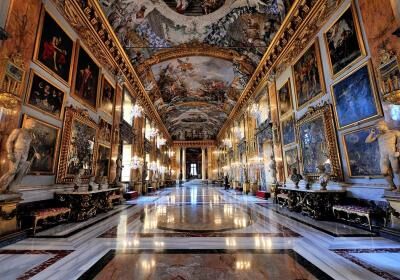 The only section of the Palazzo Colonna which is open to public, this luxurious 17th century gallery houses the private collection of the Colonna family. The collection flaunts the work of artists like Salvatore Rosa, Guido Reni, Guercino and Annibale Carracci. Spread over six rooms, the first things you’ll notice about the gallery is the fresco! Dedicated to Marcantonio Colonna, the fami...Read more
The only section of the Palazzo Colonna which is open to public, this luxurious 17th century gallery houses the private collection of the Colonna family. The collection flaunts the work of artists like Salvatore Rosa, Guido Reni, Guercino and Annibale Carracci. Spread over six rooms, the first things you’ll notice about the gallery is the fresco! Dedicated to Marcantonio Colonna, the fami...Read more -
Santa Costanza
(169 Votes)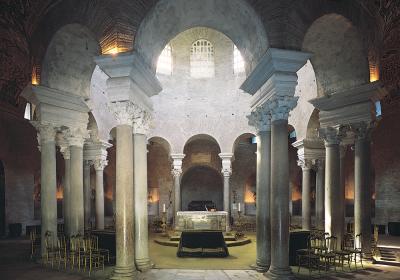 A mausoleum built by Constantine for his daughter Costanza, this building was later refurbished as a church in the 13th century. Exhibiting the finest early Christian Architecture, the building is also has a mix of traditional Roman Mausoleum which gives it a circular shape. The frescoes on the ceiling, the vestibule porch, the decoration with geometric motifs and the Corinthian columns are a m...Read more
A mausoleum built by Constantine for his daughter Costanza, this building was later refurbished as a church in the 13th century. Exhibiting the finest early Christian Architecture, the building is also has a mix of traditional Roman Mausoleum which gives it a circular shape. The frescoes on the ceiling, the vestibule porch, the decoration with geometric motifs and the Corinthian columns are a m...Read more -
Villa Torlonia
(47 Votes)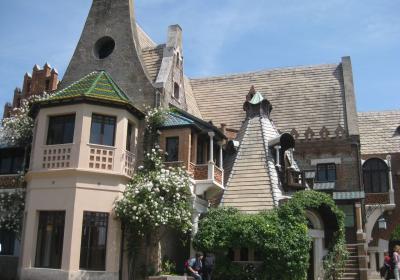 A spectacular collection of luxury villas and their many museums make the Villa Torlonia a rather special one. The admission is given inclusive of the museums and other Villas which are a rare treat in history. Most of the villas date back to the 18th and the 19th century and showcase the grandeur, elegance and breath-taking art that surrounded the owners. Highlights include: Villa Torlonia Th...Read more
A spectacular collection of luxury villas and their many museums make the Villa Torlonia a rather special one. The admission is given inclusive of the museums and other Villas which are a rare treat in history. Most of the villas date back to the 18th and the 19th century and showcase the grandeur, elegance and breath-taking art that surrounded the owners. Highlights include: Villa Torlonia Th...Read more -
Borghese Palace
(14 Votes) You will be enthralled witnessing the majestic appearance of the Palazzo Borghese. It is a historic palace too and tourists love to take a look at the palace for many reasons. The palace belonged to the eminent Borghese family. The whole palace reflects the traces of utter sophistication. The columns and courtyards of this palatial mansion showcase classical architectural quality. The palace ha...Read more
You will be enthralled witnessing the majestic appearance of the Palazzo Borghese. It is a historic palace too and tourists love to take a look at the palace for many reasons. The palace belonged to the eminent Borghese family. The whole palace reflects the traces of utter sophistication. The columns and courtyards of this palatial mansion showcase classical architectural quality. The palace ha...Read more -
Jewish Ghetto
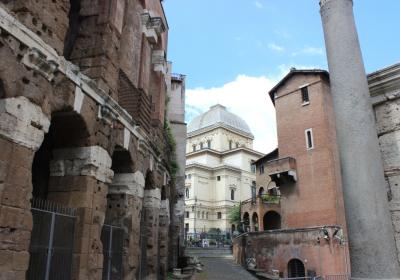 This place has a dark past and dates back to mid-sixteenth century when Pope Paul IV restricted the entire Jew population of the country to this small area with huge walls defining the boundaries for the Jews. Today, it is a happening hub dotted with interesting eat-outs. Be here to taste the culinary variations that have resulted into some fantastic dishes that display the cross-culture of the...Read more
This place has a dark past and dates back to mid-sixteenth century when Pope Paul IV restricted the entire Jew population of the country to this small area with huge walls defining the boundaries for the Jews. Today, it is a happening hub dotted with interesting eat-outs. Be here to taste the culinary variations that have resulted into some fantastic dishes that display the cross-culture of the...Read more